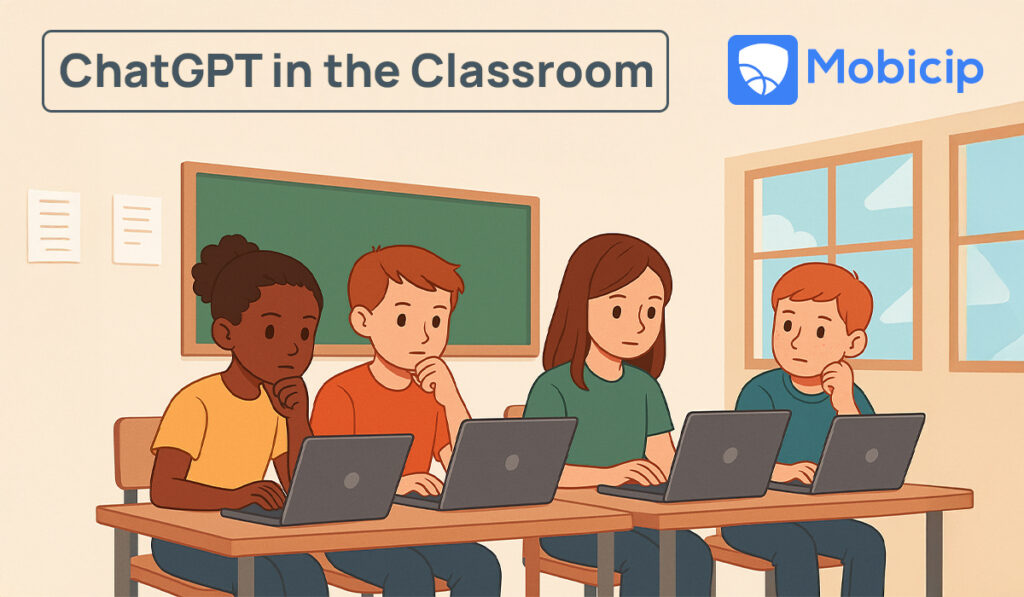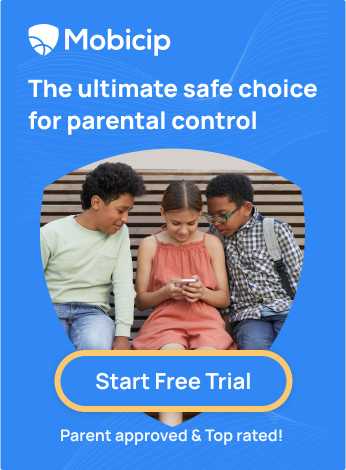ChatGPT in the Classroom – How Parents Can Foster Critical Thinking in the Age of AI

ChatGPT, a generative AI tool developed by OpenAI, is quickly becoming part of everyday life. What began as a cutting-edge technology is now mainstream—so much so that people casually say, “I ChatGPT-ed it,” much like we once said, “I Googled it.” From workplaces to schools, ChatGPT is being widely used in classrooms by students and teachers as a go-to source for learning and problem-solving. In particular, ChatGPT in the classroom is changing the way students complete assignments, prepare projects, and approach critical thinking.
For parents and educators, the growing use of AI in education presents both exciting opportunities and serious challenges. On one hand, tools like ChatGPT can boost creativity, inspire curiosity, and make learning more engaging. Students can explore new perspectives, refine their writing, and practice problem-solving in fresh ways. On the other hand, depending too much on AI risks limiting independent thinking, encouraging plagiarism, and even spreading misinformation. The dual nature of AI means it must be used carefully—to support, not replace, real learning.
That’s where Mobicip comes in. As a trusted parental control app and digital safety platform, Mobicip helps families set healthy boundaries, monitor online activity, and encourage responsible tech use. By guiding kids to use AI tools like ChatGPT wisely, Mobicip ensures that these innovations become stepping stones for growth, not shortcuts.
In this essay, we’ll explore how students are using ChatGPT in the classroom, why fostering critical thinking is vital in the age of AI, and how Mobicip helps parents shape safe, balanced, and responsible digital habits.
Understanding the Role of ChatGPT in the Classroom
AI’s growing presence in society reflects the way students, professionals, and even families are turning to AI for quick answers and ideas. But as with all new technologies, the rise of ChatGPT brings both advantages and disadvantages. On the bright side, it opens doors to more engaging learning and creative exploration. At the same time, it also brings some big questions: Can we always trust the information it gives? Are kids leaning on it too much instead of thinking for themselves? And how do we make sure it’s being used responsibly?
Benefits of ChatGPT in the Classroom
Some meaningful benefits of using AI tools in the classroom for both students and teachers include,
- Inspires creativity by suggesting ideas and generating different perspectives.
- Summarizes existing materials into concise takeaways for easier understanding.
- Personalizes learning by tailoring explanations to student needs and learning styles.
- Provides immediate feedback that helps students identify strengths and weaknesses.
- Creates and supplements content such as lessons, quizzes, and discussion prompts.
- Enables inclusive learning with accessibility tools like text-to-speech and translation.
- Expands access to resources with AI-powered platforms like Canva Magic Write, Curipod, Eduaide, and Quizzizz.
- Clarifies abstract concepts using image-generating AI to visualize complex ideas.
- Streamlines administrative tasks like grading and scheduling, giving teachers more time with students.
- Fosters critical discussions around technology and ethics, encouraging deeper thinking.
Limitations of ChatGPT in the Classroom
While the advantages are compelling, AI tools like ChatGPT also come with challenges:
- Privacy and Security Concerns: Data collection, storage, and misuse risks can threaten student privacy.
- Potential Bias in AI Algorithms: Non-native English speakers may be unfairly flagged for plagiarism due to biased AI detectors.
- Reduced Human Interaction: Over-reliance on AI may weaken teacher-student relationships and social-emotional learning.
- High Implementation Costs: Larger AI systems can be prohibitively expensive for many schools.
- Academic Misconduct: Plagiarism and cheating are easier when students use AI to bypass learning.
- Unpredictability and Inaccurate Information: AI sometimes produces misleading or false answers, requiring careful evaluation.
The Critical Thinking Gap: What AI Can’t Teach
Critical thinking is more than just “knowing the answer.” It’s the ability to ask questions, evaluate evidence, and connect ideas. In the same way reading and writing were essential skills in the last century, critical thinking and digital literacy are must-haves in today’s world. Students need to not only find information online but also decide if it’s reliable, useful, or just noise.
How AI Gets in the Way
Here’s the catch: while ChatGPT and other AI tools can deliver fast, polished answers, they don’t automatically make students smarter. In fact, they can sometimes short-circuit the learning process. Because AI generates responses that sound convincing, kids may accept them at face value instead of digging deeper. For example, a student might paste ChatGPT’s explanation of a history event into their homework without checking whether the details are accurate—or even logical.
Why This Matters
When students stop questioning, they miss out on the real magic of learning. Without the habit of asking “Is this true?” or “What’s missing here?” they risk developing shallow thinking patterns. The sheer flood of digital information already overwhelms many kids; add AI into the mix, and the temptation to take shortcuts grows stronger.
The truth is, AI can be an amazing helper—but it can’t replace the human skill of reflection. That’s why teaching kids to think critically about what AI produces is just as important as teaching them how to use AI tools in the first place.
Practical Activities to Build Critical Thinking at Home
AI can be a great tool for learning, but kids need to use it wisely. Instead of just asking ChatGPT for answers, parents can turn it into a game that sparks curiosity, creativity, and problem-solving. One effective approach is to use Socratic questioning, asking open-ended questions that encourage children to explain their reasoning, consider alternatives, and reflect on what they learn.
Here are some fun activities that combine AI use with Socratic questioning to foster critical thinking:
Analytical Thinking: “Fact or Fiction?”
Ask ChatGPT a tricky question—like “Do turtles live to be 500 years old?”—then have your child double-check the answer using books, trusted websites, or even asking an expert.
This teaches kids to cross-check information instead of taking AI at face value.
Open-Mindedness: “Argue the Other Side”
Have ChatGPT generate two arguments on a topic (for example, “Should homework be banned?”). Then, ask your child to pick the opposite side of what they believe and defend it.
This builds empathy and helps them see multiple perspectives.
Problem-Solving: “AI vs. Human Challenge”
Ask ChatGPT to suggest solutions to a real-life problem, like planning a low-cost family outing. Then have your child come up with their own plan. Compare both answers and mix the best ideas.
This shows kids that AI can inspire—but they still need to think independently.
Reasoned Judgment: “Truth Sleuths”
Together, ask ChatGPT a question about history, science, or current events. Then research the same topic elsewhere. Discuss what ChatGPT got right, what it missed, and why.
This helps kids evaluate credibility and evidence.
Reflective Thinking: “What Did We Learn?”
After using ChatGPT for homework help, ask your child: “Which parts were most useful? Which parts would you change?” Encourage them to reflect on how they used AI as a tool, not a shortcut.
Reflection strengthens long-term learning.
Communication: “Explain It Like I’m 5”
Ask ChatGPT to explain a concept (like black holes) at different levels—first to a child, then to a college student. Then challenge your child to explain it back to you in their own words.
This improves clarity, listening, and articulation.
Creative Decision-Making: “AI Debate Club”
Let ChatGPT play one side of a debate (e.g., “Cats vs. Dogs as the best pets”), and your child argue the other. Encourage them to use evidence, not just opinions.
This helps kids practice persuasion and logical reasoning.
Ethical and Academic Integrity Concerns
As helpful as ChatGPT can be in the classroom, it also raises important questions about ethics and learning. One of the biggest risks is plagiarism. With a few clicks, students can generate entire essays or homework assignments without doing the work themselves. While this may feel like a shortcut, it undermines learning and prevents kids from building their own voice and skills. Over-reliance on AI can also create a habit of copying instead of thinking, which may hurt students in the long run.
Parents can step in to guide their children toward responsible use. Here are a few practical ways to instill originality and integrity:
- Emphasize effort over perfection—praise the process, not just the result.
- Encourage kids to use ChatGPT as a brainstorming buddy, not a final draft machine.
- Teach the importance of citing sources and giving credit where it’s due.
- Have conversations about honesty and why cutting corners can backfire.

Mobicip’s Role in Guiding Responsible AI Use in the Classroom
When it comes to raising responsible digital citizens, parents need more than just rules—they need the right tools. That’s where Mobicip steps in. Designed as a trusted parental control and digital safety platform, Mobicip helps families strike the balance between embracing AI tools like ChatGPT and avoiding misuse.
Some of the key features that make Mobicip especially valuable in this context include:
- Customizable Filters – Allows parents to tailor content restrictions, blocking or allowing specific sites, keywords, or categories based on their child’s unique needs.
- App Management – Lets parents approve or limit specific apps, so AI platforms can be introduced thoughtfully rather than without oversight.
- Screen Time Limits – Helps families set healthy boundaries by managing how long children spend on digital devices. This prevents endless AI “quick answers” and encourages deeper, independent thinking.
- Activity Reports – Provides parents with insights into browsing patterns, helping to spot red flags such as excessive copy-paste behavior or overuse of AI for homework.
By combining these features, Mobicip becomes more than just a safety net—it’s a partner for parents in shaping how kids interact with AI responsibly.

Conclusion
“Was there anything more exciting in life than seeking answers?” Isaac Asimov’s words capture the heart of learning in the age of AI.
The use of ChatGPT in the classroom can provide instant information, spark ideas, and suggest solutions, but the true value lies in nurturing curiosity, judgment, and independent thought. By guiding children to question, verify, and reflect on what AI offers, parents and educators help them develop critical thinking skills that last a lifetime. Platforms like Mobicip reinforce this approach, offering customizable filters, screen time controls, and activity insights that encourage responsible use without stifling exploration.
When digital tools work alongside human guidance, learning becomes a collaborative, thoughtful, and engaging journey. AI then serves as a compass, pointing toward understanding rather than replacing the effort it takes to discover it. In this way, the thrill of seeking answers stays alive.





